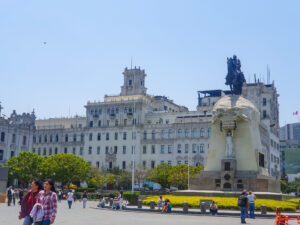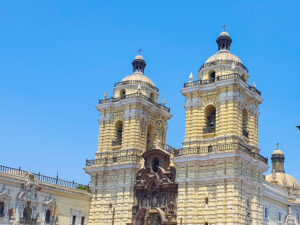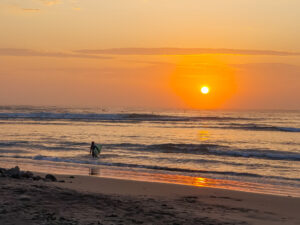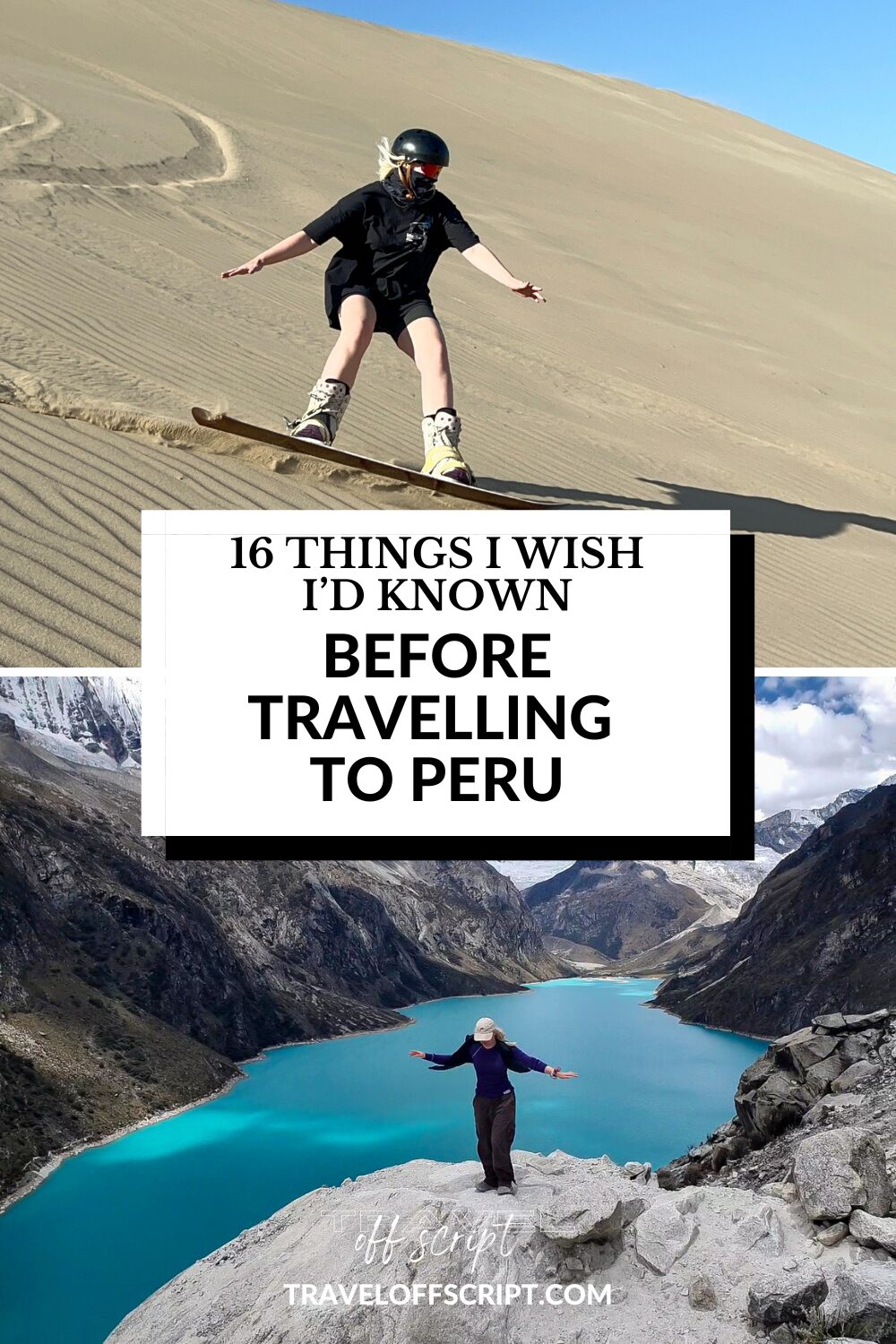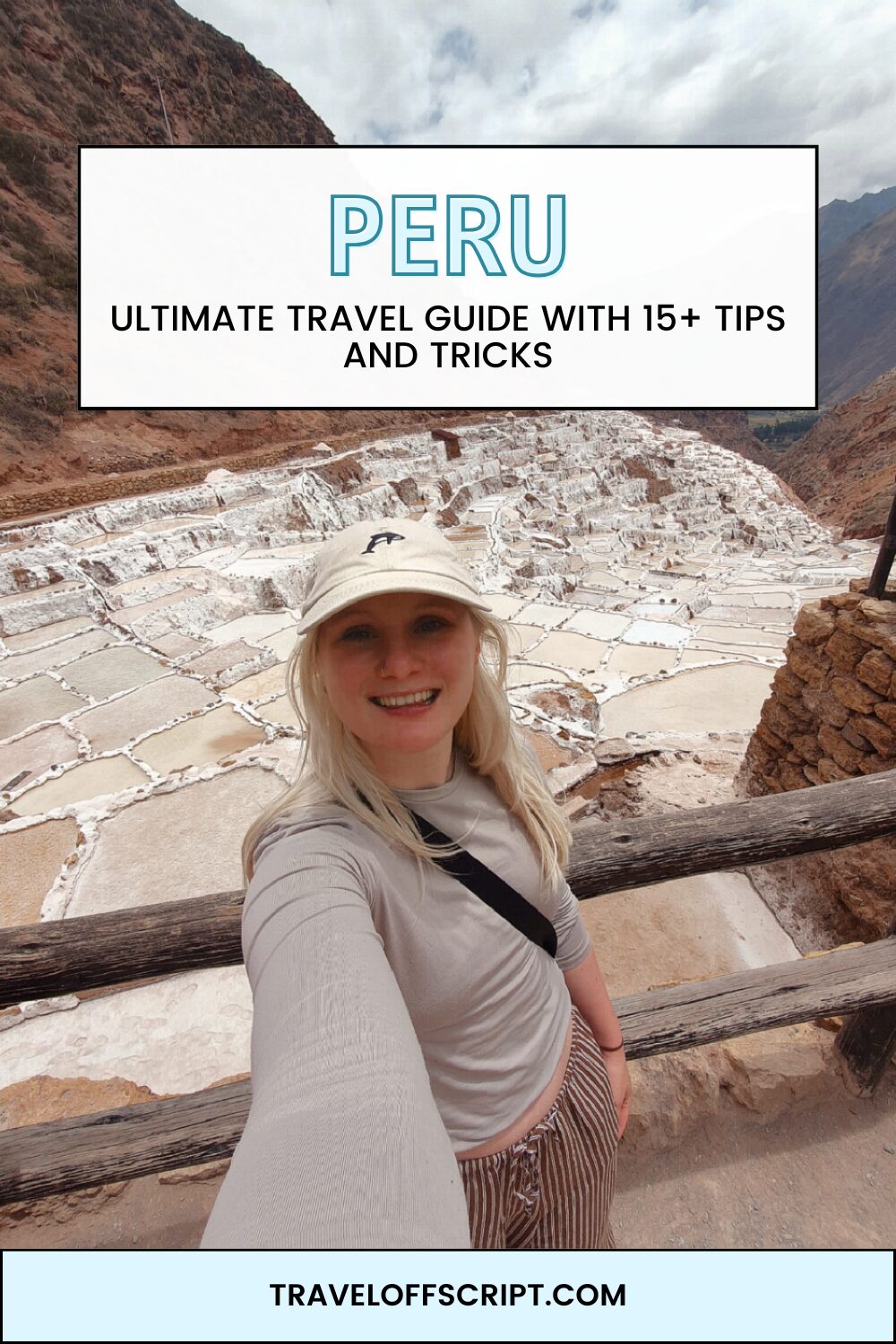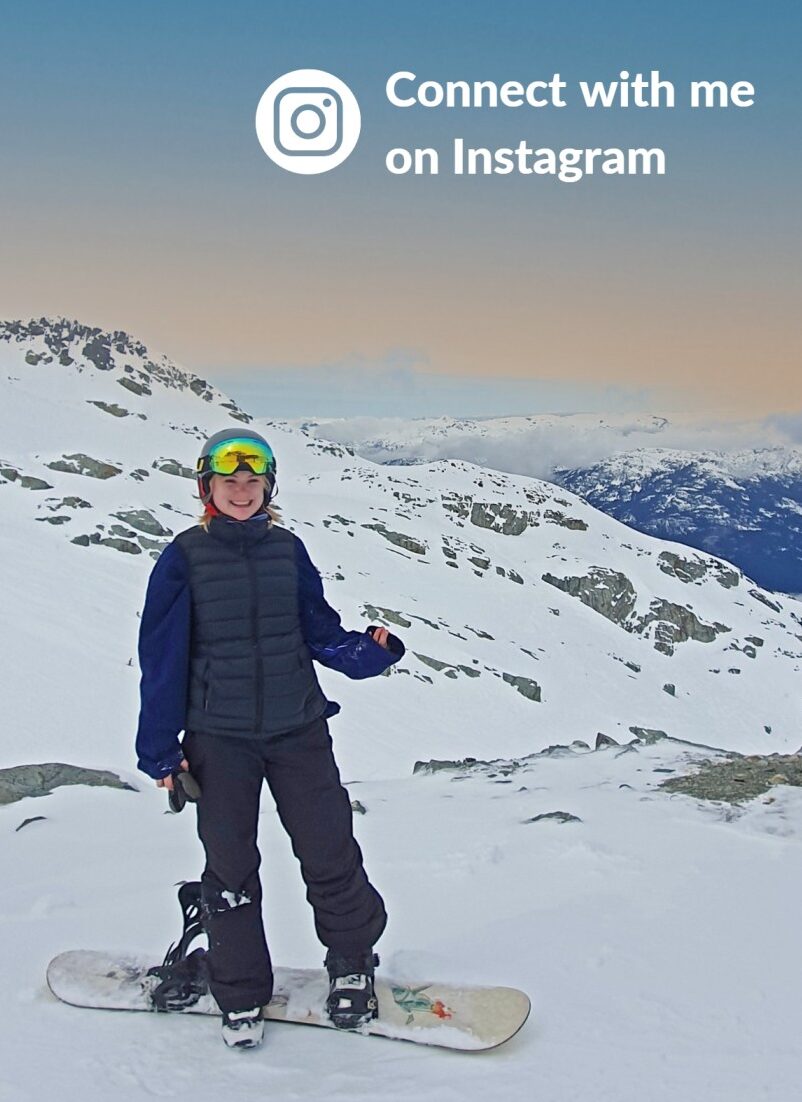16 Essential Things To Know Before Travelling To Peru
Bell | 16 November 24
Peru is not nearly as scary to travel as I first thought, however, there are a few tips and tricks that will make your time there so much easier. Enjoy your time in Peru to the fullest by knowing these essential 16 essential things!
Peru has been on my bucket list for years and walking the ancient steps of the Incas through Machu Picchu is easily one of my favourite travel experiences ever. While the experience was one I will remember for the rest of my life, the path to get there was far from smooth.
So along with a ton of historical and cultural knowledge, I have also taken away lots of tips and tricks that are crucial when travelling to Peru. Here are the top 16 you need to know before venturing to the land of the Incas!
This blog may contain affiliate links to support the running of the blog. If you make a purchase through these links, I will earn a commission at no extra cost to you. Thank you.
Table of Contents
ToggleThings about Travelling Peru I Wish I’d Known Before I Went
1. Don’t underestimate the altitude
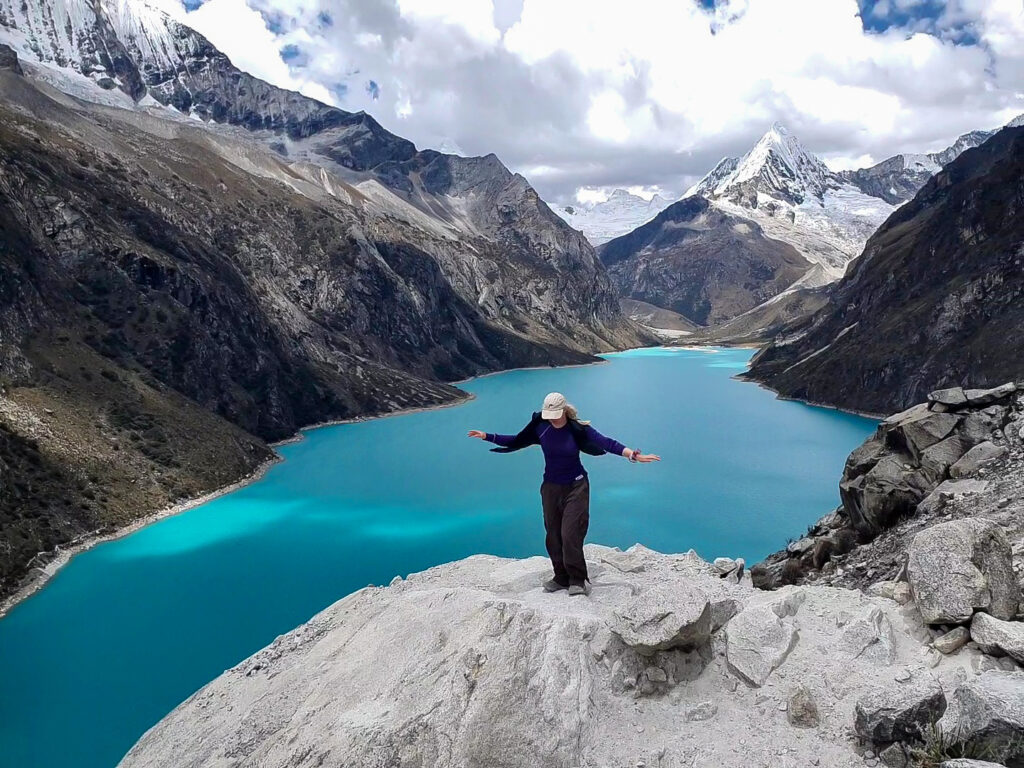
Before heading to Peru, I had read up and been told about the altitude. Did I take it seriously? Not enough. So if you listen to anything on this list, make it this point.
If you have never experienced an altitude above 3000m, Peru will be new for you. It certainly was for me, even though I spend all my winters as a snowboard instructor on high mountains. Just not quite as high as Peru.
A lot of the main sights in Peru are located above the 2,500m mark, where most people start to experience some symptoms. That includes Cusco, Rainbow Mountain, Huaraz, Puno and more.
Most travellers I met only felt slightly out of breath or had a headache, however, there were also a few who experienced severe nausea, dizziness and felt generally very bad. Some even had to leave the altitude and miss their tours.
I personally found adjusting to the altitude difficult and felt very nauseous and out of breath. It has little to do with your fitness either, so there is no real way to prepare for it.
You can buy the altitude sickness medication Acetazolamide (Diamox) in most Peruvian pharmacies. It often isn’t recommended by Western Doctors, however, I had to take it in order to function at altitudes above 3,500m. My only side effects were tingly fingers and toes.
I would recommend making sure you always have time to acclimatise when first getting to high altitudes in Peru such as Cusco, so that you are able to enjoy tours without feeling terrible. Give yourself at least 2–3 days where you take everything slow — even walking! Trust me, hospital in Peru isn’t that fun.
Locals swear by Coca leaves, I found them only mildly helpful. Drinking a lot of water and electrolytes as well as eating smaller meals (digestion slows because of the altitude) worked for me, in combination with the medication.
2. Book Machu Picchu EARLY
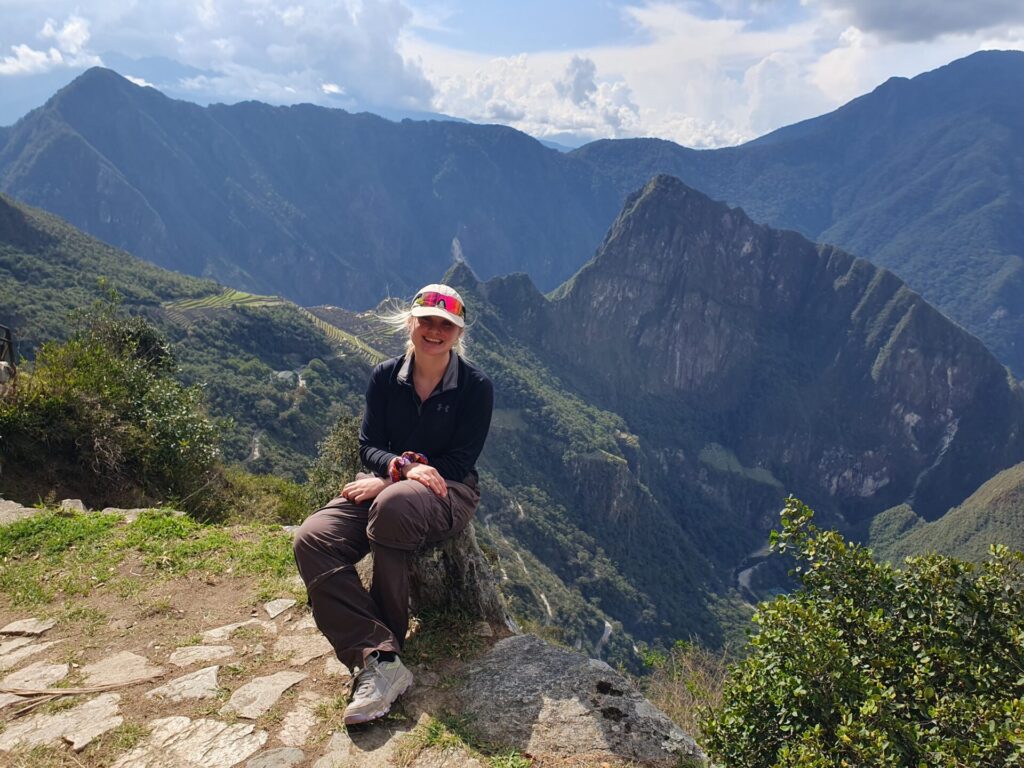
Machu Picchu sells out online months in advance, the best trails even up to a year (in short, Circuit 2 is the best to see both the upper terrace and walk through the city so the ideal option for most people, Circuit 1 is the postcard views and Circuit 3 is just walking through the city. If you can’t get 2, get 1).
I rarely book anything in advance as I love to adapt my travels based on people I meet and other factors, so I found this difficult. However, I would HIGHLY recommend trying to pre-book this part of your journey, especially if you are somewhat short on time.
I will explain how I managed to get tickets only 3 weeks before, but it was stressful so keep that in mind.
What to do when it is sold out:
Initially, I tried to book Machu Picchu tickets directly on the official website. However, I found this incredibly confusing due to the many options and times as well as most of it was already sold out. If you book early, as I said choose Circuit 2 (any is fine) and you’ll probably want as early as possible to get fewer crowds.
When it is sold out, you have two options: book a tour as they may still have tickets or queue the day before in Aguas Calientes.
Queueing in Aguas Calientes will cost you two nights. The first night, you need to get to the ticket office at 3 am to queue. You then get a number and have to come back at 3 pm to get a ticket to Machu Picchu for the next day. Depending on where you are in the queue, you will have more or less options regarding which circuit to take. It is an annoying process but I know quite a few people who have done it and successfully gotten last-minute Circuit 2 tickets.
I booked a short Inca trail tour (the 4-day ones were sold out) three weeks in advance and my tour company were still able to secure me Circuit 1 and 3 tickets. This worked out ideal as we arrived through the Sun Gate and saw the famous view of Circuit 1 and then came back the next day to see Circuit 3 on a guided tour. I went with Machu Picchu Reservations and found it much easier for them to organise the tickets than trying to work it out myself. The Inca Trail is also stunning, so while it is expensive, it is 1000% worth it!
Accommodation in Aguas Calientes
I’d recommend pre-booking your hotel or hostel as I have heard of a few people who haven’t and ended up in not so great accommodations. Here are some good options:
$ – Supertramp Hostel Machupicchu
3. A conversational level of Spanish will make your trip 10x easier
I only started learning Spanish two months before flying to Peru, so my Spanish was very much beginner-level when I arrived. This made things a bit more challenging in the beginning, as not everyone speaks English and even if they do, they are often able to help more in Spanish.
Peru did have more people who spoke English than for example Chile, but a decent level of Spanish will still make your trip so much easier (and cheaper, especially for tours and markets). Some tours were also only offered in Spanish, especially in the North e.g. Huaraz, so that is something to keep in mind.
4. You will go from snowy mountainscapes to the desert
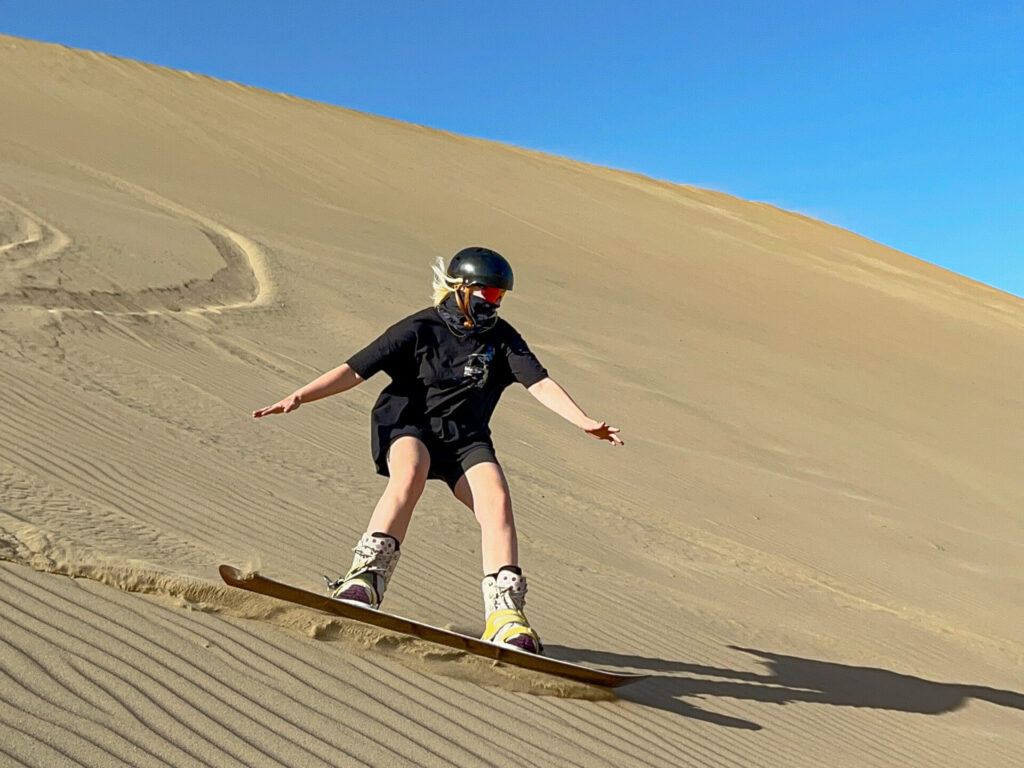
Peru seemingly has everything – from surfing to hiking in the snow to sandboarding to one of the World Wonders. With this varied landscape (and altitude) comes a wide variety of temperatures and weather. I spent about 5 weeks in Peru and experienced temperatures of 0° to around 25°. This was also in October, so their spring.
I’d recommend bringing lots of layers, one warm weather outfit and a good rain jacket and fleece. Also, a great pair of walking shoes (I used trail hiking ones from Columbia) is key.
5. Peru is really safe to travel
Before I left for South America, my friends and family told me that they were worried about me. They had heard stories in the news or on social media that had them wondering why I would travel there.
As with all countries, while it is good to do your research and keep yourself informed and safe, not all prejudice is justified. In fact, I felt perfectly safe at all times in Peru and I am a solo, female traveller.
Night buses were always very comfortable and safe (Cruz del Sur and Linea were my favourites, Civa is also okay). I also had no issues with having my phone out and touristy cities like Cusco were even safe to walk around alone at night.
The general rules of travel still apply though! Keep your valuables on your body and hidden when possible. Know which areas are fine for tourists and which not so much. Talk to your hostel about safety and what to keep in mind for the area you are in. Unless you are told it’s okay, don’t walk around at night – InDrive is the local taxi app and super cheap.
As a solo, female traveller, I also always try to have some data for emergencies. I personally got a local Entel Sim Card while in Peru, which is the cheapest option if you are staying longer. For shorter trips or more convenience, you can also get an E-Sim like Airalo.

6. Sacred Valley is worth a few days on its own
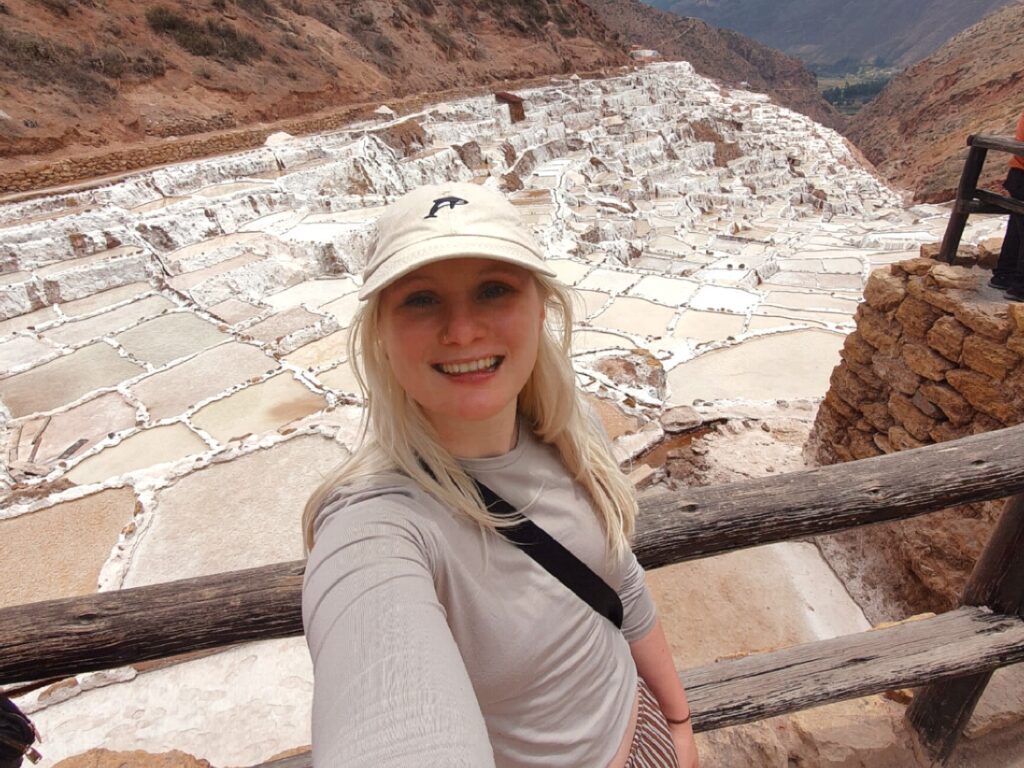
I did the Sacred Valley as a one-day tour from Cusco due to time constraints and honestly wish I could have had way more time (the tour was great for what it was, but each sight was so stunning). Pisac alone with its impressive Incan ruins that perfectly tell the story of everyday life and death in Incan time is worth two days.
Most of the valley is also at around 2800m (or less) compared to the almost 3400m of Cusco, so it is great for acclimatisation. If you can, book less time in Cusco and more time in the Sacred Valley such as Pisac, Moray and Urubamba.
Best Hotels in the Sacred Valley
7. Doing laundry is easy and cheap if you use local places
Hotels and hostels massively overcharge for laundry in Peru. Most charge 10-15 soles per kilo of laundry, which quickly adds up. Most local places won’t charge more than 5 soles per kilo (~1.20€) – you may need to haggle a bit though.
In Cusco, I never paid more than 3 soles per kilo, but the lady initially tried to charge me 6. Stand your ground and try and speak Spanish to get a fairer price.
The laundry was generally really clean after too as they have actual machines and even dryers in a lot of Peru (this wasn’t the case in Bolivia). I always used the “2-hour” places that take more like 24 hours so just make sure you have a bit of extra time.
8. Night buses are comfortable and the best way to get around
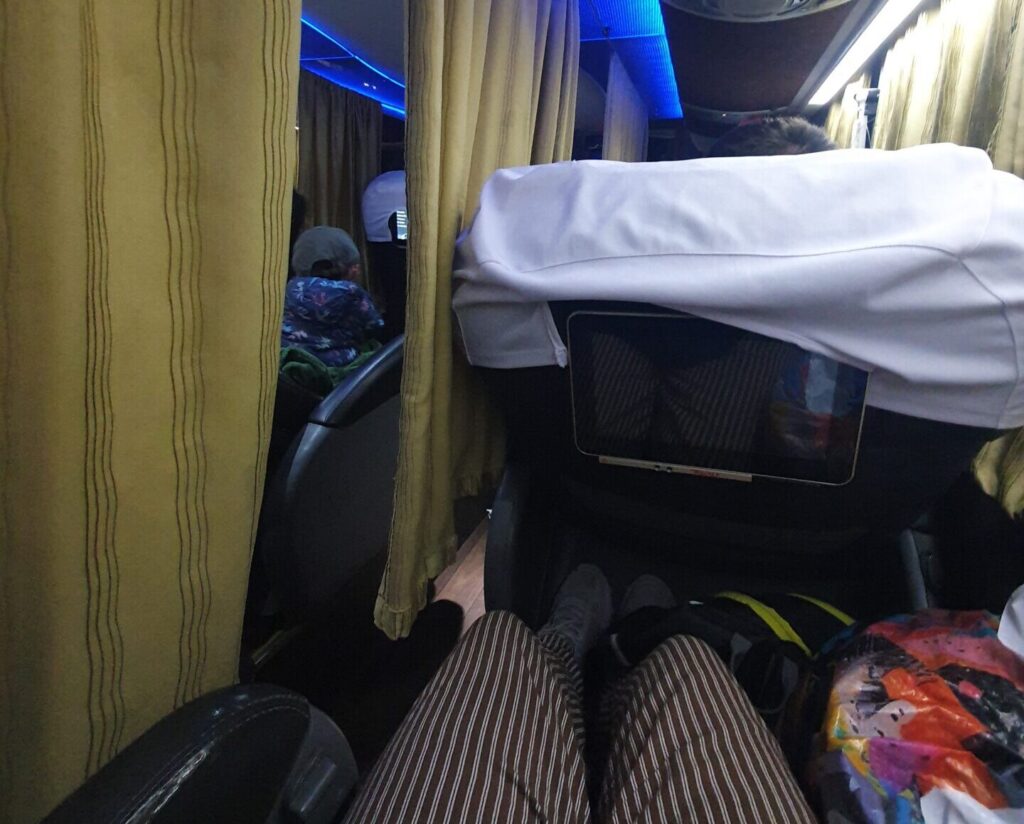
The night buses were possibly my biggest surprise in Peru. They are super comfortable with big seats that usually recline to 160°, sometimes even 180°, which is so much better than the buses you get in Europe. The perfect budget way to cover the large distances in Peru while saving on accommodation.
The best tourist options are Cruz del Sur and Linea, though I also took the more local Civa bus and had no issues. For shorter distances, I would always just turn up at the bus station and ask a few different companies for the cheapest price. They will usually cut you a deal too. For overnight, I always pre-booked for safety reasons.
9. Some things are as expensive as in Europe
In general, Peru is super affordable to travel. Things like accommodation and food cost a fraction of back in Europe or the US. However, there are a few things that are just as expensive in Peru as back home, or even more expensive.
This isn’t a major issue if you come prepared, however, I ran out of a couple of skincare items during my time in Peru and was shocked at the prices. My usual items were so expensive and even the local ones were very pricy.
The same applies to outdoor wear. I had to buy a rain jacket and it was the same as it would be at home for a local brand. Once again, not an issue but just good to know in case you plan to buy when there. As for electronics, I had a charger break during my time in Peru and it was a nightmare to replace. I was lucky that I was in Lima and had some of the chain stores as options which were at least not more expensive than back home.
So, stock up on cosmetics, bring backups of the most important electronics and ideally purchase any outdoor wear before the trip.
10. Real Alpaca sweaters or other pieces start at 200€ and there are a lot of fakes
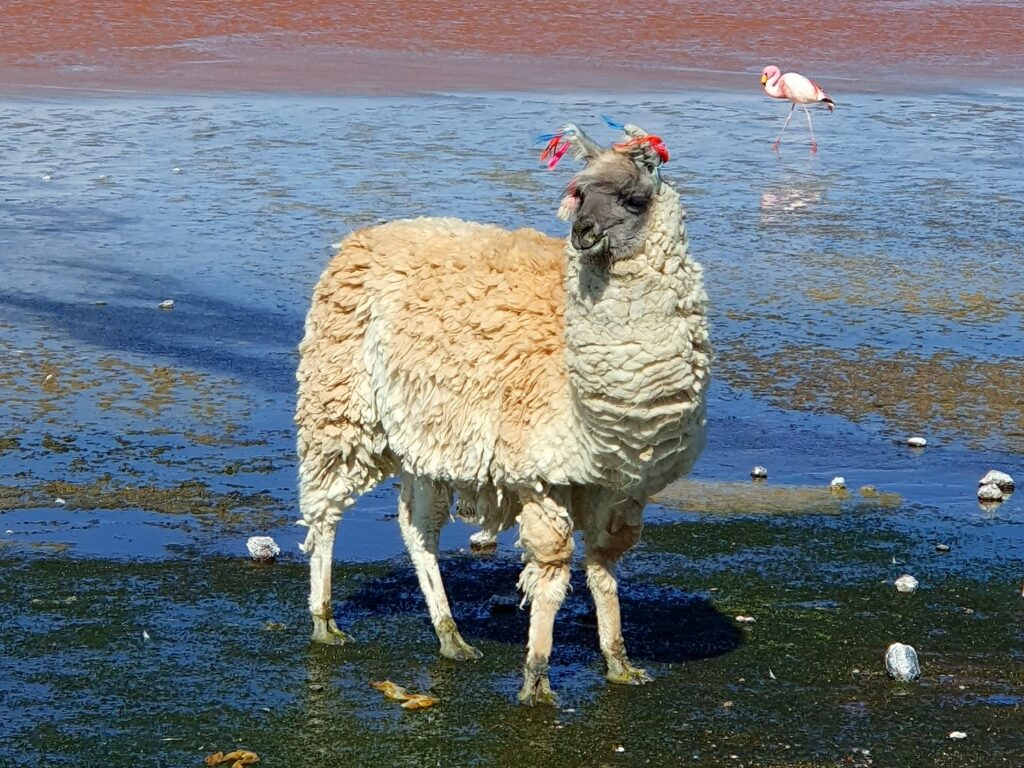
If you are headed to Cusco or Arequipa, you will quickly learn about Alpaca and Llama wool. Most tours will talk about the topic and help you distinguish the real from the fake.
A real sweater will set you back no less than 200€, with the cheapest items being socks at around 30€. They are incredibly soft and very warm, so worth the investment however may not be ideal for backpackers as they are handwash only.
Many markets will sell you “real” pieces much cheaper, claiming it is baby alpaca which is the most expensive wool. If the price seems too good to be true, it very likely is. The real wool will feel cool to the touch and also feel heavy.
11. InDrive is SO MUCH cheaper than Uber and normal taxis
InDrive is the local Uber and I wish I had started using it much earlier in my trip. You do need cash and ideally coins for it so you have the correct change, but that is easy in Peru as many places still only accept cash.
InDrive works through a sort of bargaining system. When you put in where you want to go, the system will tell you a suggested price. Drivers can then accept that fare or make other suggestions. I found that the first few will always try and get more money, but you can get a very fair price if you wait it out for a few minutes.
12. Protests and street closures are common and could delay your travels
Protests combined with street closures are unfortunately common across all of South America, and Peru is no different. I once got stuck for a few days in the surf town Huanchaco as all roads were closed due to strikes. It wasn’t an issue for me as I hadn’t pre-booked anything, but it is good to be aware of if you are on a stricter schedule.
If you for example have booked Machu Picchu on a tight timeline, flying into Cusco may be the safer option than taking a bus when it comes to ensuring you arrive on time. That being said, I only witnessed two protests in my 5 weeks in Peru and neither really affected me (but I also met a girl who got stuck on a bus for 30 hours, so it is something to keep in mind while planning).
13. Menu del Dia is affordable and delicious local food

As a tourist, most restaurants will not mention their “Menu del Dia” to you. However, every restaurant has one (unless it is solely targeted at tourists). The Menu del Dia is their menu of the day and usually only costs around 10-15 Soles or around 2.50–4 euros.
For that price, you usually get an entree soup or other dish and a local main, such as Lomo Saltado (beef stir-fried with veggies usually served with fries and rice). Sometimes you even get a dessert. It’s by far the most affordable option in any restaurant.
14. Bring some toilet paper with you at all times
The toilet situation in Peru is varied, especially while on tours or hikes. It can get very basic at times and toilet paper is NEVER a given.
I would highly recommend always carrying a little bit of toilet paper and a few Soles in coins with you for those emergencies. You can almost always find a toilet, even ones advertised in normal houses, but they will charge you around 1 Sole. Toilet paper is sometimes included, though in buses and on most tour toilets you will need to bring your own.
15. You will always need cash
This is related to the last point, but you will always need some cash. If it isn’t for the toilet, it is for the market or to buy water or souvenirs or a taxi. I also had a lot of hostels which only accepted cash payments, or you had to pay around 5% extra to pay by card. Even a lot of the tours were paid directly in cash.
I have a Revolut card and always took out money at the Banco de la Nación ATMs at no cost. They were also called Multired and most travellers I met were able to get money fee-free from those ATMs.
16. Make sure you research the season before going
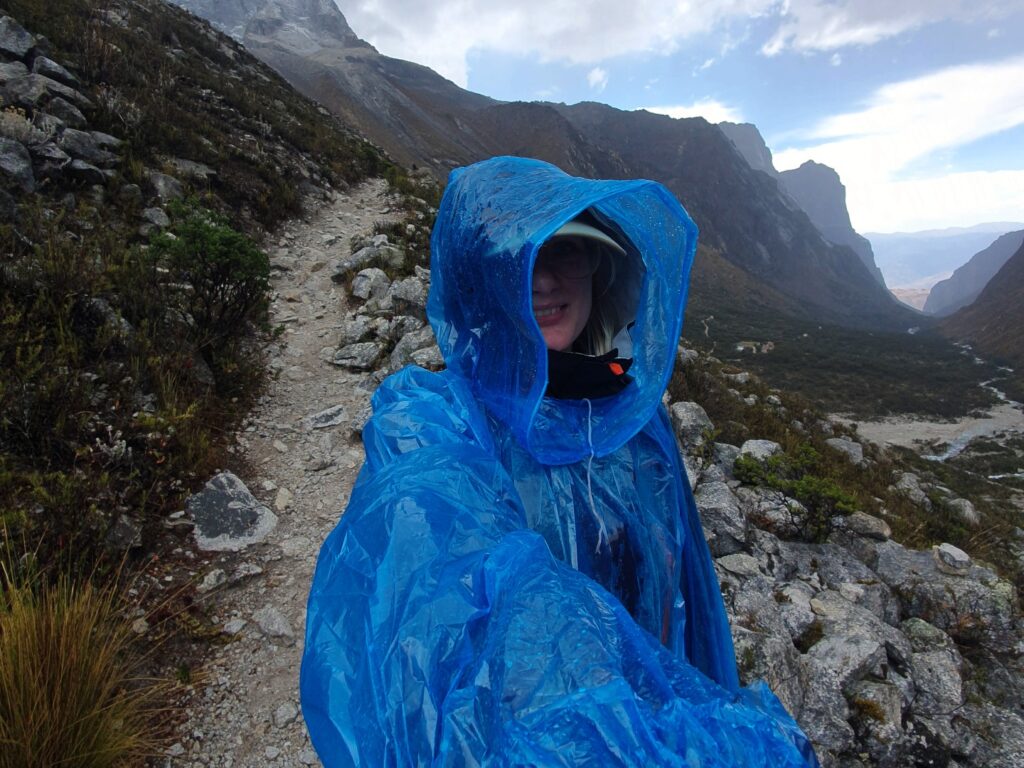
We already touched on the topic of varying weather in Peru, however knowing which season you will be visiting is crucial to a successful trip. December to March is the rainy season in Peru, meaning you can expect heavy downpours, especially in the mountains and rainforest. Trails like the famous Inca Trail may be closed during this time because of landslides.
The upside of visiting during this time is the reduced crowds compared to the dry season. I visited in October, so just before the rainy season, and thought it was the perfect time. While we had some showers, it was beautifully sunny most of the time and also quite warm as it is Peru’s springtime. Crowds were also manageable and I was able to book the Inca trail only three weeks in advance (though I wouldn’t recommend risking leaving the booking that late, it is good if in a pinch).
Hi, I'm Bell
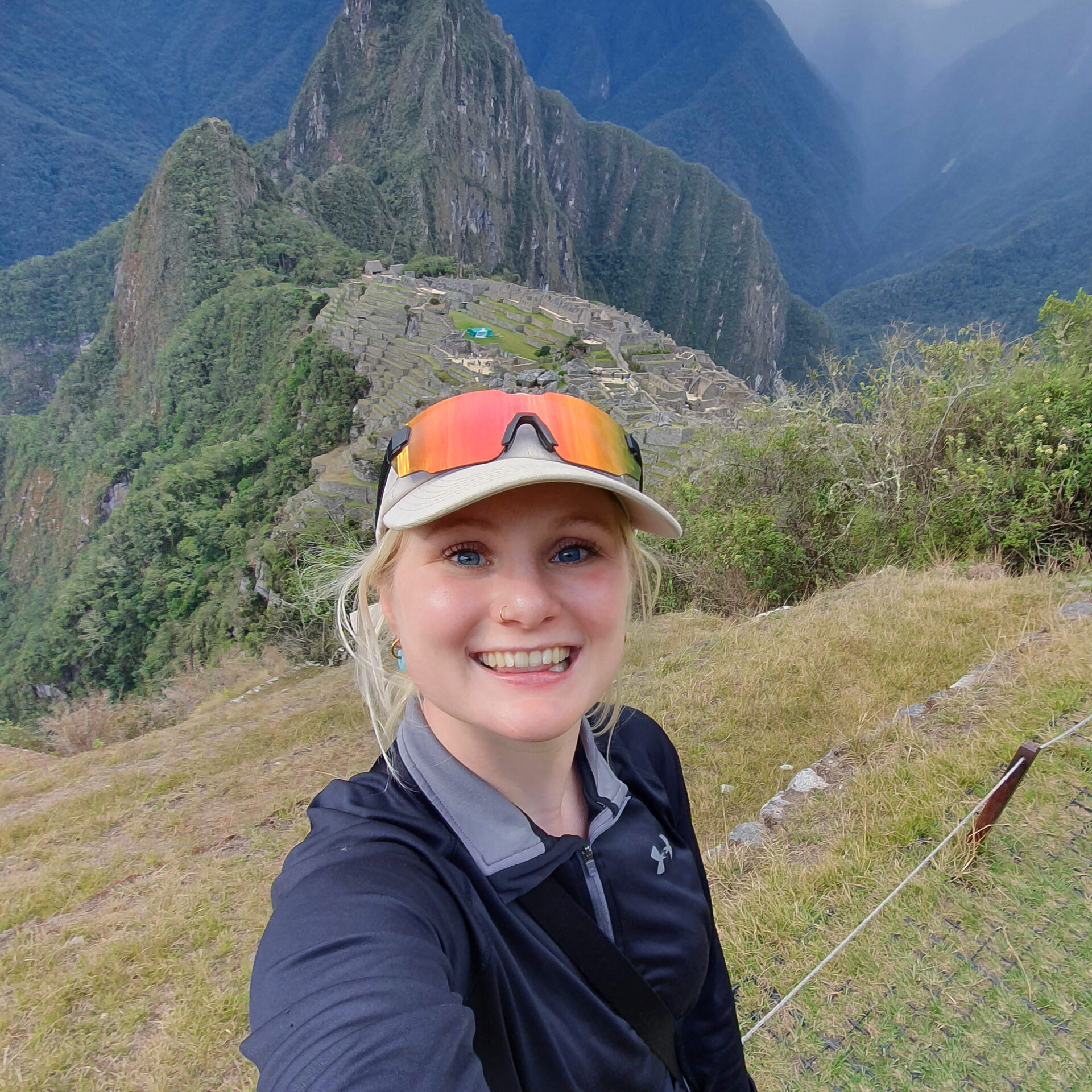
My blog is here to show you that there isn’t one correct way to travel the world. Together, we can figure out what that means for you. Learn more about me here!
Latest from the blog:
Travel Off Script contains affiliate links to support the running of the blog. If you make a purchase through these links, I will earn a commission at no extra cost to you. Thank you.

